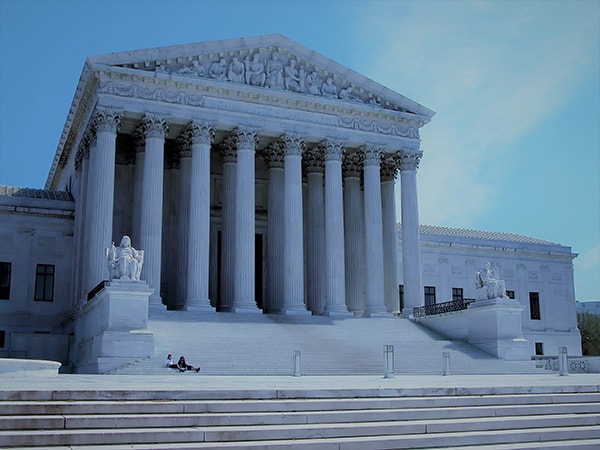Why Employ a Federal Crime Attorney: Protect Your Legal Rights with Specialist Legal Assistance
Why Employ a Federal Crime Attorney: Protect Your Legal Rights with Specialist Legal Assistance
Blog Article
Demystifying the Process of Federal Appeals: What You Need to Know
Navigating the complex world of government allures can often appear like going across undiscovered waters for those not familiar with the procedure. Understanding the subtleties of appellate court territory, the ins and outs of filing a notice of charm, providing a compelling brief, and making an influential oral argument are vital elements that can substantially influence the result of a situation. By unraveling the layers of intricacy bordering federal allures, individuals can obtain a more clear insight right into the devices that regulate this essential phase of the legal system.
Recognizing Federal Appeals Process
Looking into the elaborate realm of the government allures procedure unveils a methodical and organized journey through the judicial system - alaska federal appeal attorneys. Federal appeals function as a crucial mechanism for assessing choices made by lower courts. Recognizing this procedure is necessary for any person associated with legal proceedings at the federal level
The process generally starts with a party disappointed with a lower court's ruling submitting a notification of appeal. This sets off a testimonial by a higher court, where a panel of courts evaluates the legal debates offered by both celebrations. Briefs detailing the legal thinking behind each event's placement are sent, and oral arguments might be heard to make clear intricate problems.
The appellate court's choice is based upon an extensive assessment of the reduced court's process and the arguments offered. The courts do not reconsider facts yet focus on whether legal mistakes happened that impacted the lower court's decision. As soon as the appellate court reaches a choice, it can attest, reverse, remand, or modify the lower court's judgment, offering clarity and finality to the lawful conflict. Understanding this procedure is crucial for navigating the complexities of government allures effectively.
Appellate Court Jurisdiction Explained

Appellate courts have territory over certain kinds of instances, typically those involving legal errors, step-by-step issues, or concerns of law instead of valid conflicts. The jurisdiction of appellate courts is usually outlined in statutes and regulations that govern the court system. Comprehending appellate court territory is crucial for events included in the charms process as it establishes whether a case is qualified for review and the level to which the appellate court can interfere in the lower court's choice.
Filing a Notification of Charm
The preliminary action in beginning the federal appeals procedure includes filing a Notice of Charm with the suitable appellate court. federal securities fraud appeal attorneys. This important document formally informs the court and the other celebrations associated with the case that the appealing party means to look for an evaluation of the reduced court's decision. Filing a Notification of Charm is a rigorous procedural need that sets the appellate procedure moving
When preparing the Notice of Allure, it is necessary to guarantee conformity with the particular rules and guidelines of the pertinent appellate court. The document has to normally consist of details such as the case name, the lower court's name, the date of the judgment being appealed, and a concise declaration showing the premises for the charm.
Timeliness is important when submitting a Notification of Allure. Missing out on the target date for sending this document can result in the appeal being rejected, highlighting the value of exact and punctual initiation of the charms process. It is a good idea to seek legal guidance to browse the intricacies of filing my company a Notification of Appeal effectively.
Briefing and Oral Disagreement
In the appellate process, offering composed briefs and taking part in oral arguments play critical functions in supporting for the appealing celebration's placement prior to the appellate court. Briefs are extensive lawful papers that describe the celebrations' disagreements, lawful authorities, and analysis sustaining their settings. These created submissions offer the court with a detailed understanding of the truths of the instance, the appropriate regulation, and why the appealing event thinks the lower court's decision must be reversed.
Following the entry and testimonial of the briefs, dental arguments use the celebrations a chance to further clarify their positions, resolve any inquiries the appellate courts may have, and highlight vital points from their created briefs. Oral disagreements are a chance for the attorneys to persuade the judges with verbal campaigning for and responses to queries from the bench.

Getting the Appellate Court Choice

Verdict
To conclude, the federal charms process is a facility but crucial action in seeking justice. Recognizing the appellate court jurisdiction, submitting a notice of allure, preparing briefs, and providing dental debates are all essential components of this process. Inevitably, receiving the appellate court choice can provide quality and resolution to legal disputes. It is necessary to navigate the government allures procedure with persistance and focus to information to attain a fair outcome.
As we progress from comprehending the government appeals procedure to studying the ins and outs of appellate court jurisdiction, a fundamental aspect comes to light concerning the authority and limitations of these greater courts in the legal landscape. Appellate court territory refers to the extent of situations that a specific appellate court has the power to determine and assess upon. Unlike test courts that hear instances for the initial time, appellate courts are restricted to examining decisions made by lower courts. Recognizing appellate court territory is critical for celebrations involved in the charms procedure as it determines whether a case is eligible for review and the extent to which the appellate court can intervene in the lower court's choice.
Whether the appellate court attests, reverses, or remands the reduced court's decision, recognizing the effects of the judgment is vital for all parties involved in the appellate process.
Report this page